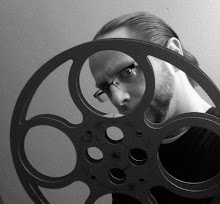In 2015, one of the best films of the year was the Denis
Villeneuve-directed SICARIO. The CIA/FBI vs. the Mexican drug cartel crime
thriller, written by Taylor Sheridan, earned three Oscar nominations and was
one of the best reviewed films of the year. This week, the sequel arrives. Here
is everything you need to know about SICARIO: DAY OF THE SOLDADO.
What is this about? –
Picking up some time after the events of the first film, the CIA discovers
that the Mexican drug cartel is smuggling terrorists across the U.S. border,
and starts a plan of action which involves the kidnapping of a drug lord’s
daughter to entice a war between cartels.
Who is in this? – Josh Brolin reprises his role as the
CIA operative who bends the law. His notable roles include NO COUNTRY FOR OLD
MEN (2007), and TRUE GRIT (2010). Also returning is Benicio del Toro as an
undercover operative, whose notable films include TRAFFIC (2000), and 21 GRAMS
(2003). The rest of the cast is rounded out by Isabela Moner, Catherine Keener,
Jeffrey Donovan, and Matthew Modine. Emily Blunt, who had the lead role in the
first film, does not appear this time around.
Who is behind this? –
Denis Villeneuve, who directed the first film, does not direct this time.
He is replaced by Italian director Stefano Sollima, who is mostly known for
crime drama films, such as the award-winning ACAB – ALL COPS ARE BASTARDS (2012).
The film is written by Taylor Sheridan, who has a strong writing record with
the acclaimed SICARIO (2015), HELL OR HIGH WATER (2016), and WIND RIVER (2017).
Random Facts – The
film has been described as a “stand-alone spin-off” more than a direct sequel
to SICARIO, although a trilogy is being planned * Denis Villeneuve could not return to direct due to his
commitments to his own films; ARRIVAL (2016), and BLADE RUNNER 2049 (2017) * SICARIO is a Spanish word that means
“hitman”. Soldado in English means “soldier” * This is the second film Benicio del Toro and Josh Brolin have
appeared together in this year, with the first being AVENGERS: INFINITY WAR * Famed cinematographer Roger Deakins,
who was nominated for an Oscar in the first film, was not available for the
sequel. He was replaced by Dariusz Wolski, whose credits include the PIRATES OF
THE CARIBBEAN film series, along with THE CROW (1994), and DARK CITY (1998) *
What to expect - A lot of the talk surrounding this
sequel has been focused on what’s not in
the film more than what’s in it, and maybe rightfully so. The absence of the
wonderful Emily Blunt, along with her partner in SICARIO, played by the
excellent Daniel Kaluuya, makes one wonder just who we’re supposed to latch
onto here, and much of the success of SICARIO came from the also-absent steady
hand of director Denis Villeneuve. However, SOLDADO does have the strength of Taylor Sheridan’s writing (he has yet to
script a dud), and lead actors Josh Brolin and Benicio del Toro always elevate
everything they’re in. We can expect a tight story with plenty of surprises,
and considering the territory we’re returning to, some blood and brutality can
be expected as well. The first SICARIO established a scary world where cops and
robbers dance the line, and if a good sequel is to dig further, we should be in
for a damn good film.
*
SICARIO: DAY OF SOLDADO opens wide June 29th,
with limited showings on the 28th.





















